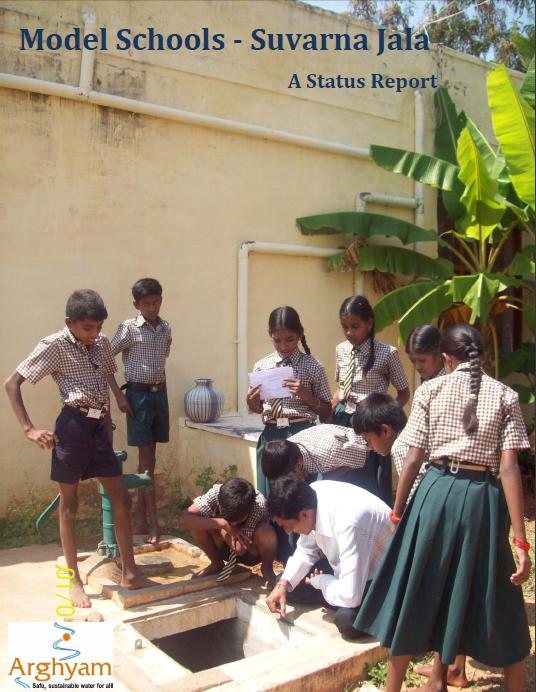 This is a status report of Arghyam's sponsored efforts to develop and showcase community managed water and sanitation systems in 17 schools of 7 districts of Karnataka.
This is a status report of Arghyam's sponsored efforts to develop and showcase community managed water and sanitation systems in 17 schools of 7 districts of Karnataka.
The Government of Karnataka through its Suvarna Jala Yojana aims at providing drinking water in 23,683 rural government schools. This was funded to the tune of Rs 7735 lakh. Arghyam conducted a survey of this scheme in 2007 in 7 districts to ascertain the status of the scheme. The survey found out that out of the 1269 rainwater harvesting structures completed by November 2006 only 140 structures were functional.
Based on this survey recommendations were made and a decision was taken to demonstrate best practices on rainwater harvesting (RWH) by the facilitation of a network of rainwater harvesting experts and grass-roots organisations. The network was built in 7 districts with the aim of developing atleast 2 model schools in each, through partner NGO's. In addition to this, defunct RWH systems were repaired and revived, and toilets blocks, awareness activities and maintenance plans were put in place.
Thus a number of activities were conducted and these included:
- Promoting the concept of RWH and water conservation and application in schools.
- Creating awareness about proper storage, handling and consumption of safe drinking water.
- Creating consciousness about personal hygiene, sanitation and its practices amongst school children.
- Ensuring people's participation and community ownership of structures.
- Development of management skills of School Development and Management Committee to carry out the project.
The project was broken into two phases, the first phase included identification of gaps and planning and the second phase involved construction. In 2009 a study of the model schools was conducted to determine the status of the RWH and sanitation units and analyse the technical and social reasons for success/failure and then come up with recommendations.
The evaluation based on primary and secondary data found that 16 of the 27 RWH structures were in operation. The water from some of the functioning RWH structures were used drinking. The reasons varied from fluoride contamination of ground water to maintenance of RWH structures and availability of water from other sources to experience of NGOs in working in the at region.
The survey found that of the 16 schools with sanitation facilities, toilets were dysfunctional in 4 of them. Availability of and access to water played a key role in use and maintenance of sanitation facilities. The survey also brought out the importance of awareness that leads to cooperation between stakeholders.
Download the status report:





 Model_School_Report_Suvarna_Jala__Arghyam_2009.pdf
Model_School_Report_Suvarna_Jala__Arghyam_2009.pdf







